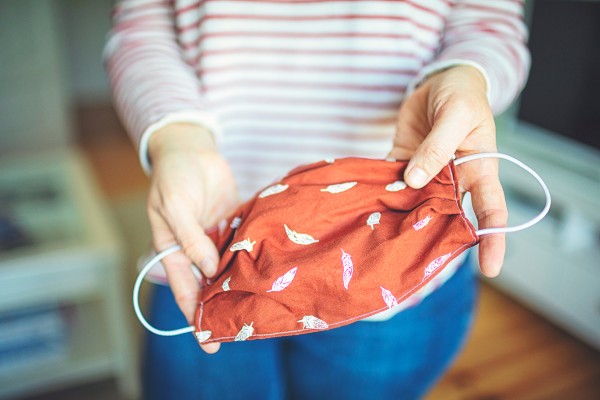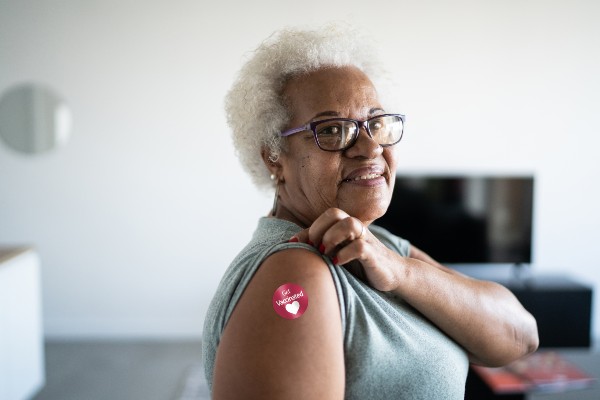Wearing a mask or face covering made of cloth in public will help protect others nearby from contracting the virus that causes COVID-19, particularly if you aren’t aware you have the disease, according to the Centers for Disease Control and Prevention.
The CDC released new voluntary mask guidelines at the beginning of April. Health officials became concerned when they learned from new data how many people with the coronavirus were either not showing any symptoms (asymptomatic) or were contagious before developing symptoms. Because of that, they could spread the disease unknowingly through speaking, coughing or sneezing near someone else.
“Wearing a mask doesn’t protect the person who wears it from getting the virus because of how microscopic the particles are,” says Rebekah Sensenig, M.D., physician specialist in infectious disease at Riverside Health . “But it can keep larger droplets from a cough or sneeze from contaminating others, at least more than not wearing a mask.”
Previously, the CDC told the general public masks weren’t necessary, in part to reserve surgical masks for medical teams treating coronavirus patients and to emphasize the importance of frequent hand-washing and social distancing as more essential means of protection.
Current CDC face cloth recommendations
“Even when wearing a face cloth, we recommend keeping a 6-foot distance from others in public,” Dr. Sensenig says. “But that’s not always possible. That’s where masks or face cloths especially come into play.”
With masks hard to obtain now, the CDC says people can make them from fabric at home or T-shirts. They offer steps on how to make a face cloth by hand and with a sewing machine.
Children under 2 years shouldn’t wear a face cloth, the American Academy of Pediatrics recommends. However, for kids older than 2, the academy adds that as long as kids can be kept at least 6 feet away from others and not be in contact with surfaces that may be contaminated, they do not need a mask.
Dos and don'ts of face cloths
When making or wearing face cloths, the CDC says they should:
- Allow for breathing without restriction. Anyone who has trouble breathing and would not be able to remove it themselves shouldn’t wear a face cloth.
- Be secured with ties or ear loops
- Fit snugly but comfortably against the side of the face
- Include multiple layers of fabric
Face cloths need to be laundered and machine dried without damaging them or changing their shape. Frequency depends on how often they are worn. The CDC hasn’t specified how often to wash a face cloth.
“When you take off a face cloth, be careful not to touch your eyes, nose, and mouth,” Dr. Sensenig says. “You don’t want any germs from things you’ve touched to get on your face.” Use hand sanitizer or wash hands immediately after removing.”



